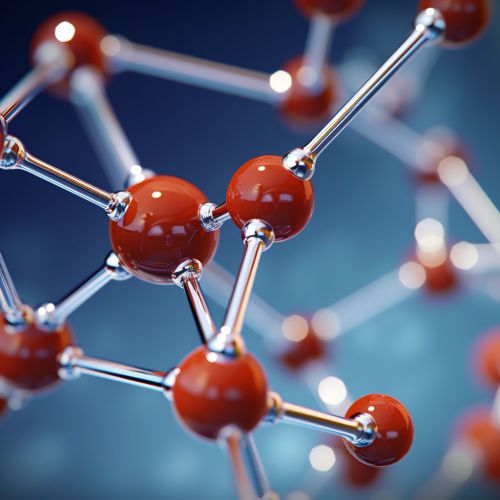Jasmonic acid
Introduction
Jasmonic acid (JA) is a type of plant hormone, classified as an oxylipin, that plays a crucial role in plant growth, development, and defense. It is involved in various biological processes such as seed germination, root growth, fruit ripening, and responses to environmental stressors.


Structure and Synthesis
Jasmonic acid is a cyclopentanone that is derived from linolenic acid, a polyunsaturated omega-3 fatty acid. The synthesis of jasmonic acid involves several enzymatic reactions that occur in the chloroplasts and peroxisomes of plant cells. The first step in the biosynthesis of JA is the oxygenation of linolenic acid by the enzyme lipoxygenase, followed by a series of reactions catalyzed by allene oxide synthase and allene oxide cyclase. The final step is the oxidative decarboxylation of 12-oxophytodienoic acid (OPDA) by OPDA reductase, resulting in the formation of jasmonic acid.
Functions
Jasmonic acid is a key regulator of plant responses to biotic and abiotic stressors. It mediates plant defense mechanisms against insect herbivores and microbial pathogens, and also modulates plant responses to wounding, drought, salinity, and temperature extremes.
Defense Mechanisms
In response to insect herbivory or microbial infection, the levels of jasmonic acid in plant tissues increase, triggering the activation of defense-related genes. These genes encode for proteins such as proteinase inhibitors, which deter insect feeding, and antimicrobial peptides, which inhibit the growth of pathogens.
Stress Responses
Jasmonic acid also plays a pivotal role in plant responses to environmental stressors. For instance, in response to wounding, JA levels increase in the damaged tissues, leading to the activation of wound-responsive genes. Similarly, under drought or salinity stress, the accumulation of JA in plant tissues triggers the expression of stress-responsive genes, enhancing the plant's tolerance to these adverse conditions.
Regulation
The levels of jasmonic acid in plant tissues are tightly regulated by a complex network of signaling pathways. The synthesis of JA is induced in response to specific cues, such as insect feeding or wounding, and is tightly controlled by a feedback mechanism involving JASMONATE ZIM-domain (JAZ) proteins. These proteins repress the activity of transcription factors that regulate JA-responsive genes, thereby controlling the amplitude and duration of the JA response.
Applications
Due to its role in plant defense and stress responses, jasmonic acid has potential applications in agriculture and horticulture. For instance, exogenous application of JA can enhance the resistance of crops to insect pests and diseases, and can also improve crop tolerance to environmental stressors such as drought and salinity. Moreover, JA has been used to promote the production of secondary metabolites in medicinal plants, enhancing their therapeutic value.
